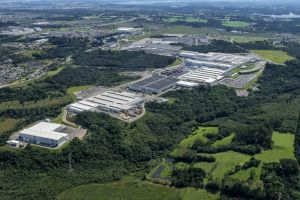
His presentation covered a range of topics, from demographic shifts and technological advancements to economic trends shaping key global players. Here’s a look at his key observations and what they mean for the future.
Global shift to the right:
One of the most significant political trends Dawie highlighted is the global shift toward right-wing politics. This movement is particularly noticeable in Europe and the United States, driven in part by demographic changes and economic pressures. Wealthy nations are experiencing population declines, while poorer regions continue to grow, leading to labour shortages in affluent countries and an increase in migration.
Europe, for instance, is seeing declining birth rates, with countries like South Korea and Japan experiencing sharp contractions in population. This demographic imbalance has economic implications, as ageing populations require more support while the labour force shrinks. The result is an increased reliance on immigration, which has, in turn, fuelled political backlash and a stronger push toward right-leaning policies.
Economic realities in key markets:
The US economy remains strong, but Dawie warns of potential challenges ahead. Donald Trump’s return to office, his economic policies—such as imposing tariffs, deporting illegal immigrants and cutting government spending—could lead to inflationary pressures. While tax cuts may stimulate business in the short term, they could also strain government revenues. The US economy is showing signs of slowing, though it is not yet in a recession.
China’s economy, once the world’s growth engine, is losing momentum. Official reports suggest a 4-5% growth rate, but Dawie believes these numbers may be inflated. The country faces structural problems, including local government debt and a shrinking workforce. As China slows down, its role in driving global economic expansion is diminishing.
In contrast, India is emerging as the next economic powerhouse. With a young and growing population, a strong technology sector, and increasing foreign investment, India is poised to become the leading driver of global economic growth in the coming decade.
South Africa’s economic challenges:
He painted a sobering picture of South Africa’s economic outlook. He identified four major problems plaguing the country’s political and economic system:
• Outdated Ideology – The ruling ANC remains influenced by outdated socialist and developmental state policies, which hinder economic growth.
• Wrong Economic Policies – Policies such as expropriation without compensation and excessive government control deter investment.
• Cadre Deployment – Government positions are often filled based on political loyalty rather than competence, leading to inefficiency.
• Corruption – Widespread corruption further weakens institutions and investor confidence.
Debt remains a significant issue, with government borrowing now exceeding 75% of GDP. The state spends over R400 billion annually on debt interest alone – more than what it allocates to social grants. With increasing fiscal pressures, Dawie warns that South Africa could face a financial crisis if corrective measures are not taken.
Potential risks from US sanctions:
One of the most concerning risks for South Africa is the possibility of financial sanctions from the United States, particularly under a Trump administration. If the US restricts American pension funds and asset managers from investing in South African government bonds, it could severely impact the economy. Similar financial isolation in the 1980s contributed to South Africa’s political and economic upheaval.
Investment outlook:
Despite South Africa’s challenges, Dawie highlighted key investment opportunities:
• Local Equities: Many South African companies earn revenues abroad, making the local stock market attractive.
• Government Bonds: With high yields, South African bonds remain appealing to investors—though they come with risk.
• Global Markets: The US stock market appears overvalued, but European markets, particularly companies with US exposure, offer better potential. Indian equities also present strong long-term growth prospects.
• Diversification: Investors should consider offshore investments but must structure them carefully to maximise benefits.
Dawie concluded with a call for policy reform. He stressed that South Africa’s government must take decisive action, including:
• Eliminating expropriation legislation that discourages investment.
• Reducing government debt and curbing spending.
• Implementing recommendations from the Zondo Commission to combat corruption.
• Improving infrastructure and education to stimulate economic growth.







